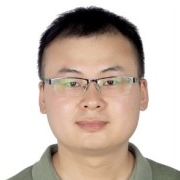Photocatalytic Water Splitting
A topical collection in Catalysts (ISSN 2073-4344). This collection belongs to the section "Photocatalysis".
Viewed by 132Editors
Interests: photocatalytic water splitting; near-infrared light-driven; g-C3N4; ZnIn2S4; tetracycline
Special Issues, Collections and Topics in MDPI journals
Interests: photocatalysis; photothermocatalysis; photochemistry; photofunctional materials; electrocatalysis
Topical Collection Information
Dear Colleagues,
With the worsening of the fossil energy crisis and industrial environmental pollution, people have paid wide attention to clean and sustainable renewable energy to replace limited fossil fuels. As a sustainable energy production method, photocatalytic water splitting has attracted considerable attention. Specifically, compared with traditional fossil fuels, the only by-product of water splitting is oxygen; it not only does not produce harmful greenhouse gases and air pollutants but also has a significant positive impact on the environment, thus opening broad new horizons for the development of sustainable energy.
In the 1970s, Honda and Fujishima first reported the process of photocatalytic water splitting to produce hydrogen on the surface of titanium dioxide (TiO2), thus laying the groundwork for the study of photocatalytic water splitting. At present, scientists are working to design more efficient and stable catalysts to improve the efficiency of photocatalytic water splitting. Recently, significant progress has been made in the introduction of new catalysts such as nanomaterials and transition metal compounds, which not only increase the photocatalysis reaction rate but also enhance the light absorption efficiency, and these innovations will further promote the practical application of photocatalytic water splitting technology, which is expected to provide sustainable and environmentally friendly energy solutions for humanity.
Although photocatalytic water splitting has made many achievements in recent years, its economic benefits are still difficult to meet the standards of industrialization, and more in-depth research is needed to improve its economic feasibility to promote the further development of photocatalytic water splitting technology.
This Topic Collection aims to bring together the latest research in the field of photocatalytic water splitting. We welcome submissions of original research, reviews, perspectives, and mini-reviews that fit within the following scopes to discuss the challenges and opportunities of photocatalytic water splitting.
Topics of interest for this Topic Collection include, but are not limited to, the following:
- Photocatalytic H2 evolution;
- Photothermal effect-assisted photocatalysis for water splitting;
- New fabrication and modification methods of active photocatalysts;
- Widening the light response of semiconductors to the solar spectrum;
- Enhancing the utilization of photo-generated carriers;
- Effect on reaction kinetics during photocatalytic water splitting process.
If you would like to submit papers to this Topic Collection or have any questions, please contact the in-house editor, Mr. Ives Liu (ives.liu@mdpi.com).
Dr. Weilong Shi
Dr. Guigao Liu
Collection Editors
Manuscript Submission Information
Manuscripts should be submitted online at www.mdpi.com by registering and logging in to this website. Once you are registered, click here to go to the submission form. Manuscripts can be submitted until the deadline. All submissions that pass pre-check are peer-reviewed. Accepted papers will be published continuously in the journal (as soon as accepted) and will be listed together on the collection website. Research articles, review articles as well as short communications are invited. For planned papers, a title and short abstract (about 100 words) can be sent to the Editorial Office for announcement on this website.
Submitted manuscripts should not have been published previously, nor be under consideration for publication elsewhere (except conference proceedings papers). All manuscripts are thoroughly refereed through a single-blind peer-review process. A guide for authors and other relevant information for submission of manuscripts is available on the Instructions for Authors page. Catalysts is an international peer-reviewed open access monthly journal published by MDPI.
Please visit the Instructions for Authors page before submitting a manuscript. The Article Processing Charge (APC) for publication in this open access journal is 2700 CHF (Swiss Francs). Submitted papers should be well formatted and use good English. Authors may use MDPI's English editing service prior to publication or during author revisions.
Keywords
- photocatalytic water splitting
- photocatalytic H2 evolution
- photothermal effect
- semiconductors
- nanomaterials
- transition metal compounds






